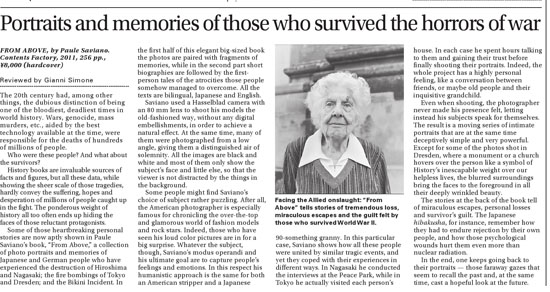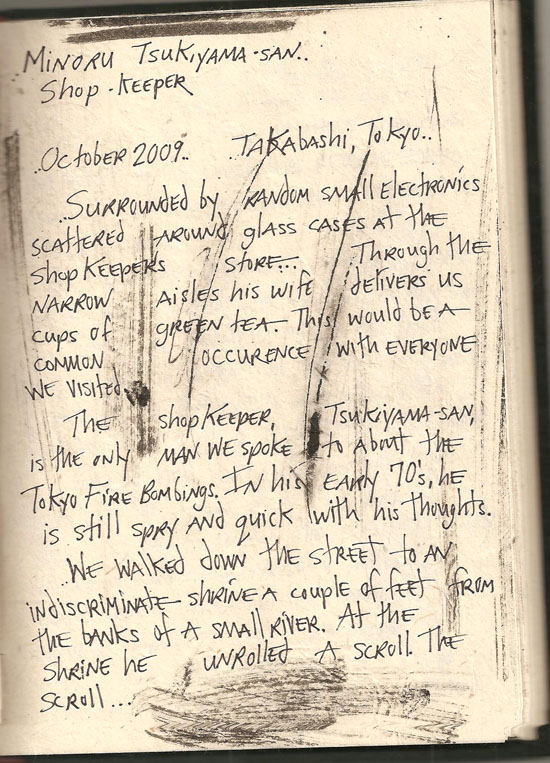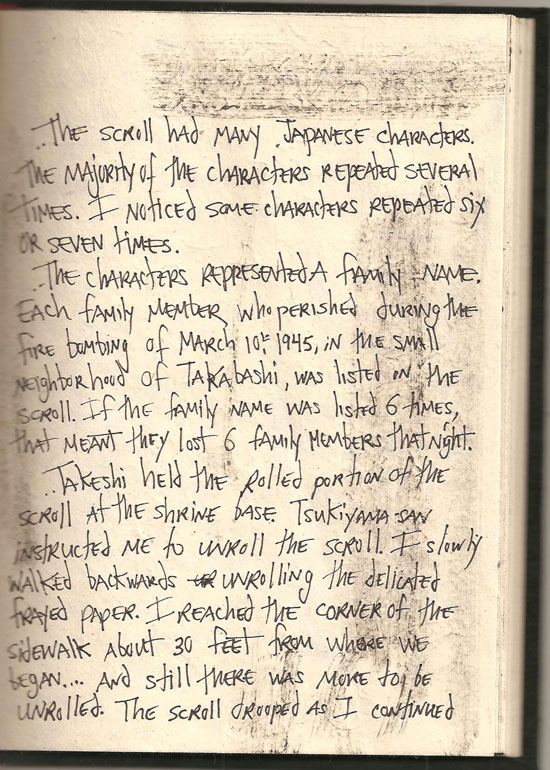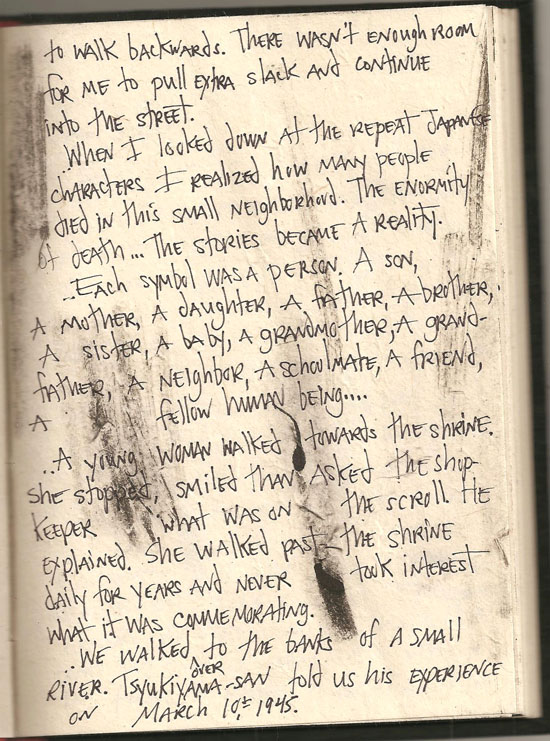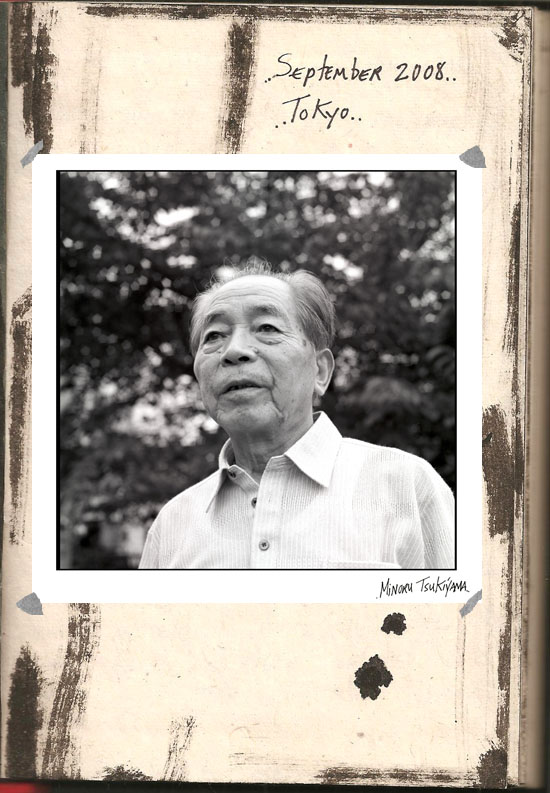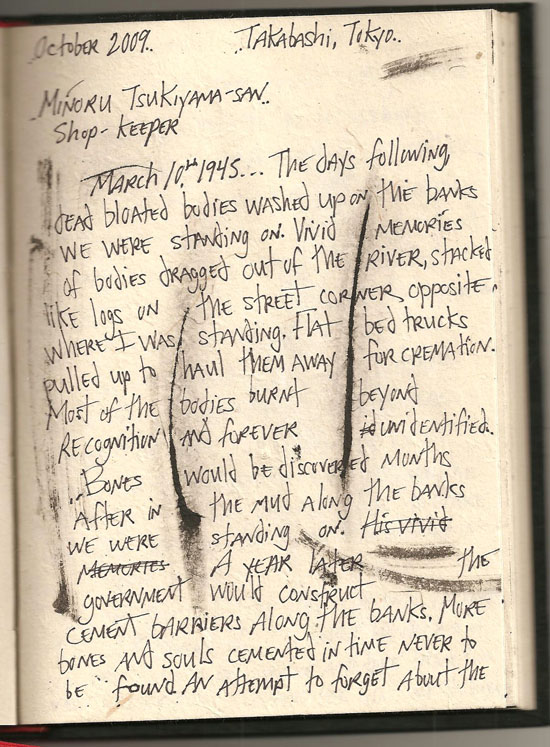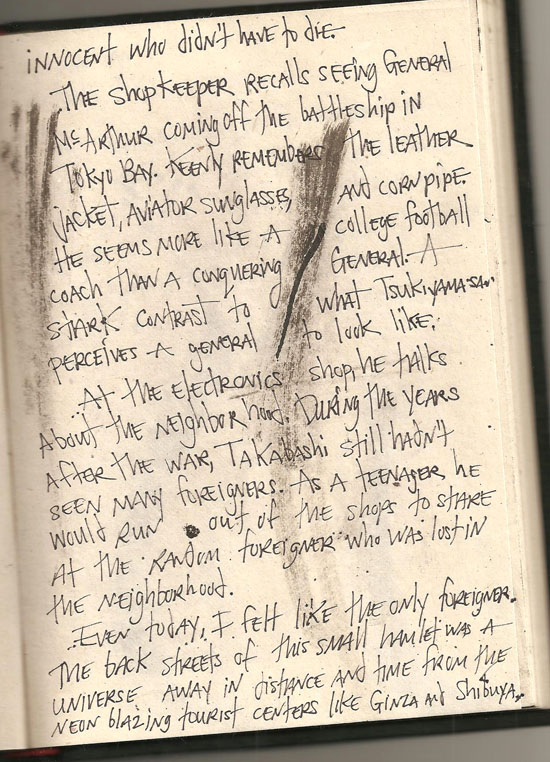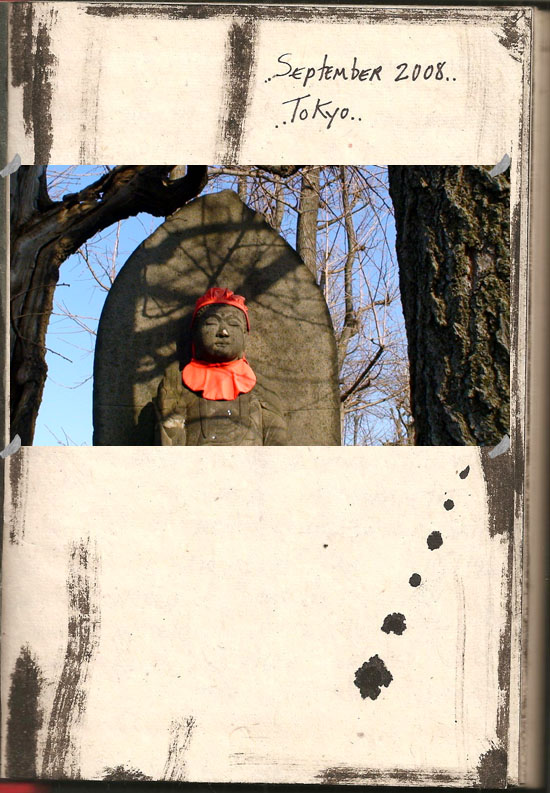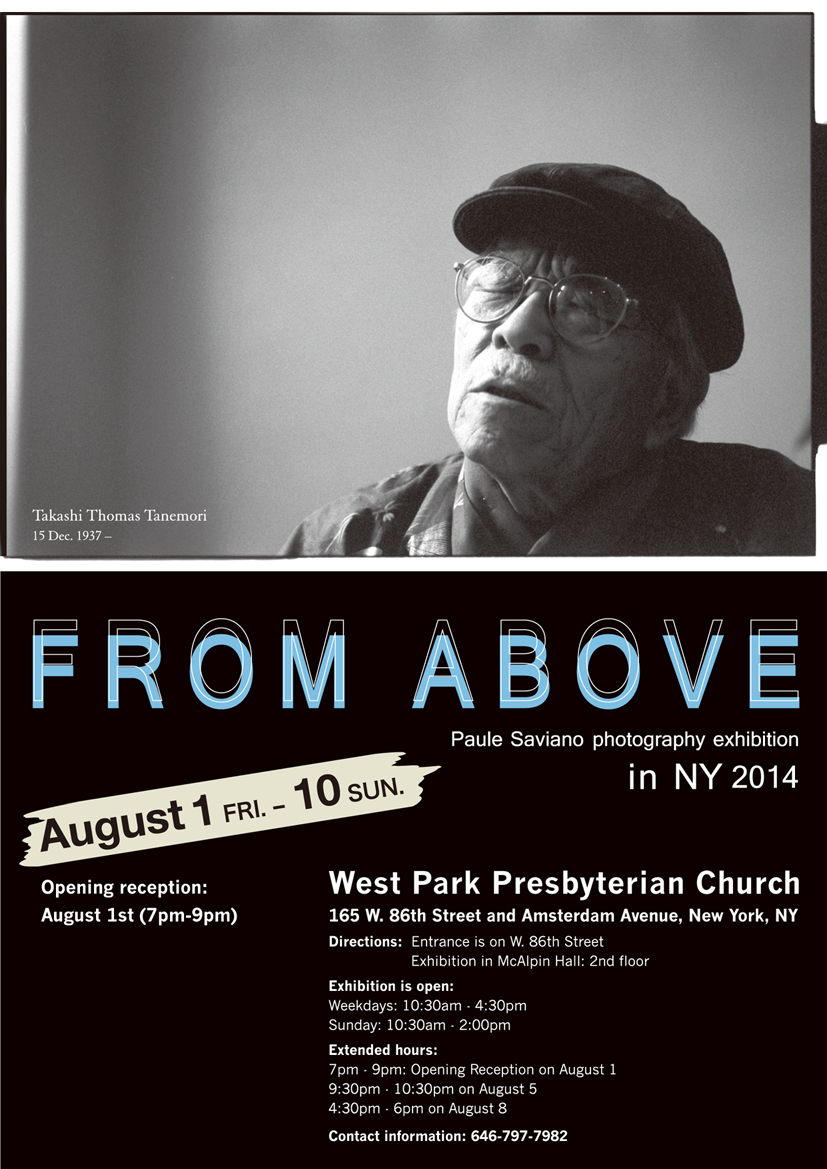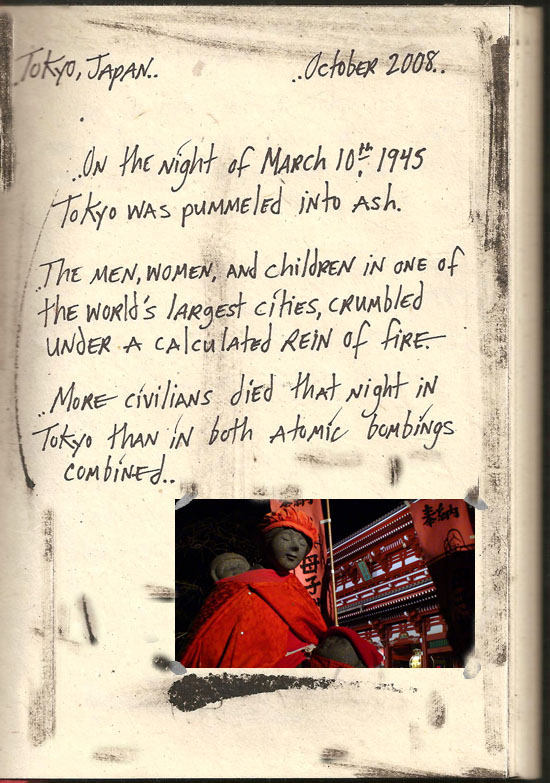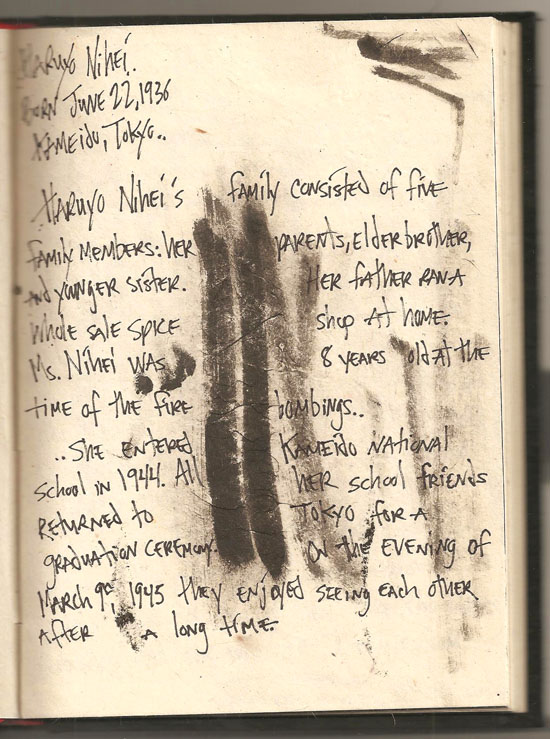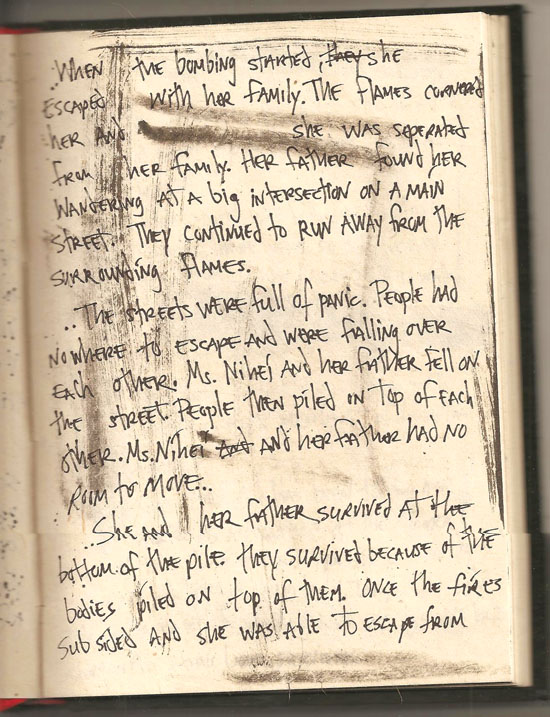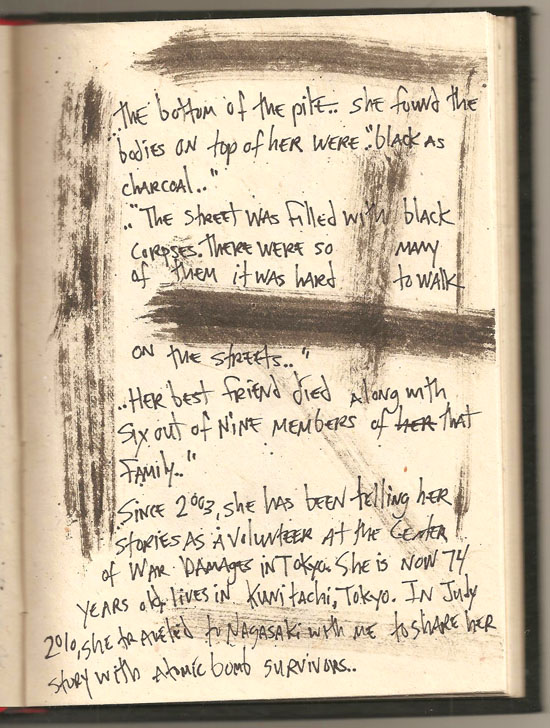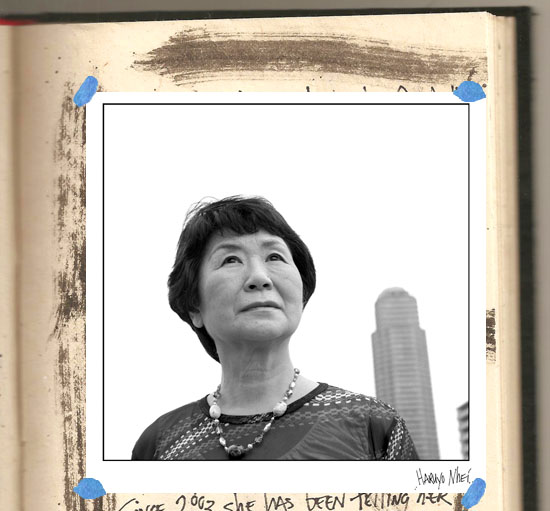..April 2012.. ..Tokyo..
From Above, my book featuring portraits of atomic bomb survivors and fire bombing survivors from Dresden and Tokyo, was reviewed by the Japan Times on April 29th, 2012.
This is a link to the review.
http://www.japantimes.co.jp/text/fb20120429a2.html
or a copy of just the text:
Sunday, April 29, 2012
Portraits and memories of those who survived the horrors of war
By GIANNI SIMONE
FROM ABOVE, by Paule Saviano. Contents Factory, 2011, 256 p.p., ¥8,000 (hardcover)
The twentieth century had, among other things, the dubious distinction of being one of the bloodiest, deadliest times in world history. Wars, genocide, mass murders, etc, aided by the best technology available at the time, were responsible for the death of hundreds of millions of people. But who were these people? And what about the survivors? History books are invaluable sources of facts and figures, but all these data, while showing the sheer scale of those tragedies, hardly convey the suffering, hopes and desperation of millions of people caught up in the fight. In other words, the ponderous weight of History all too often ends up hiding the faces of those reluctant protagonists.
Some of those heartbreaking personal stories are now aptly shown in Paule Saviano’s book, “From Above,” a collection of photo portraits and memories of Japanese and German people who have experienced the destruction of Hiroshima and Nagasaki; the fire bombings of Tokyo and Dresden; and the Bikini Incident. In the first half of this elegant big-sized book the photos are paired with fragments of memories, while in the second part short biographies are followed by the first-person tales of the atrocities those people somehow managed to overcome. All the texts are bilingual, Japanese and English.
Saviano used a Hasselblad camera with an 80mm lens to shoot his models the old-fashioned way, without any digital embellishments, in order to achieve a natural effect. At the same time, many of them were photographed from a low angle, giving them a distinguished air of solemnity. All the images are black and white and most of them only show the subject’s face and little else, so that the viewer is not distracted by the things in the background.
Some people might find Saviano’s choice of subject rather puzzling. After all, the American photographer is especially famous for chronicling the over-the-top and glamorous world of fashion models and rock stars. Indeed, those who have seen his loud color pictures are in for a big surprise. Whatever the subject, though, Saviano’s modus operandi and his ultimate goal are to capture people’s feelings and emotions. In this respect his humanistic approach is the same for both an American stripper and a Japanese 90-something granny. In this particular case, Saviano shows how all these people were united by similar tragic events, and yet they coped with their experiences in different ways. In Nagasaki he conducted the interviews at the Peace Park, while in Tokyo he actually visited each person’s house. In each case he spent hours talking to them and gaining their trust before finally shooting their portraits. Indeed, the whole project has a highly personal feeling, like a conversation between friends, or maybe old people and their inquisitive grandchild.
Even when shooting, the photographer never made his presence felt, letting instead his subjects speak for themselves. The result is a moving series of intimate portraits which are at the same time deceptively simple and very powerful. Except for some of the photos shot in Dresden, where a monument or a church hovers over the person like a symbol of History’s inescapable weight over our helpless lives, the blurred surroundings bring the faces to the foreground in all their deeply wrinkled beauty.
The stories at the back of the book tell of miraculous escapes, personal losses and survivor’s guilt. The Japanese hibakusha, for instance, remember how they had to endure rejection by their own people, and how those psychological wounds hurt them even more than nuclear radiations. In the end, though, one keeps going back to their portraits; those faraway gazes who seem to recall the past and, at the same time, cast a hopeful look at the future.
